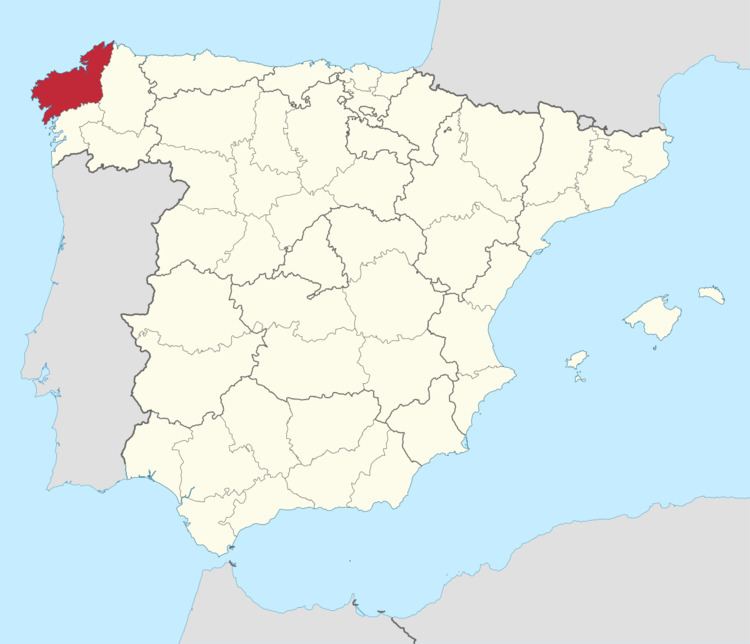Postal code 15--- | Area rank 32nd | |
 | ||
Demonym(s) Coruñés (m), Coruñesa (f) | ||
The province of A Coruña ([a koˈɾuɲa]; Spanish: La Coruña [la koˈɾuɲa]; English: Corunna) is the most North-western Atlantic-facing province of Spain, and one of the four provinces which constitute the autonomous community of Galicia. This province is surrounded by the Atlantic Ocean to the West and North, Pontevedra Province to the South and the Lugo Province to the East.
Contents
Map of A Coru%C3%B1a, Spain
History
The history of this province starts at the end of the Middle Ages during the reign of the Catholic Monarchs of Spain. During those years this province was far smaller than today. This is because in the 1833 territorial division of Spain the entire Province of Betanzos together with half of the Mondoñedo were amalgamated into one single province with its capital city in A Coruña. That was going to be the beginning of a love hate relationship between the major cities caught in between: Ferrol, Santiago de Compostela and A Coruña. Due to this unusual situation, the dioceses of these parts of Galicia do not match any longer with the administrative divisions. In addition, the capital city of the province has never had a cathedral, but both Ferrol and Santiago de Compostela have one. The City of Santiago de Compostela is not the provincial capital, but has always been the capital of Galicia and historically a rival to Toledo for being the most important city in Spain ecclesiastically speaking.
Since 1833, the province has always been the one with the largest population and largest coast. Until the second half of the 20th century, this province was both the religious and cultural centre of the entire region. The University of Santiago de Compostela was the only university in North-western Spain until the arrival of democracy after the death of General Francisco Franco.
Main sights
The cathedral of Santiago de Compostela is the destination of the Way of St. James, a major historical pilgrimage route since the Middle Ages which still gathers thousands of pilgrims each year from all over the world.
